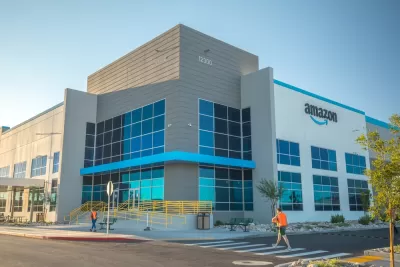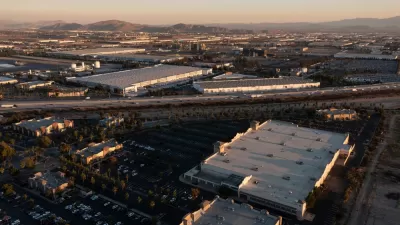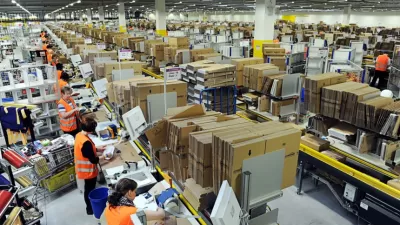Amazon has been tending to buy when previously it would have leased, and the trend has massive implications for the industrial real estate market.

According to an article by Jon Banister and Jarred Schenke that is free to access with a long-in, Amazon is shifting its approach to its industrial spaces, with consequences for the broader real estate investment industry.
"Over the course of the last year, Amazon has gone from being indifferent on whether it leases or owns the millions of square feet that make up its industrial empire to preferring to buy and develop its own facilities," according to the article.
Where the massive online shopping and delivery company would previously lease industrial real estate from developers, the company si showing up to bid on sales. In addition to reports from experts inside the industry, the article also calls on the company's own financial reports to reach its conclusions.
The e-commerce giant has spent at least $450M over the past year to acquire industrial properties and development sites, Bisnow has found. Sources expect Amazon will continue to ramp up this buying activity, as the investments allow it to capture the value premium that it creates for an industrial property and for years has passed along to its landlords.
According to the article, Amazon's evolving industrial portfolio could have massive implications for an asset class that is already seeing huge price increases—16.9% year-over-year and 41% over the past three years.
"Amazon has contributed more than any other company to the growth in prominence and value of distribution facilities, leasing them up in huge numbers across the country to build out its supply chain for delivering goods to customers," writes Banister and Schenke.
As recently as last fall, Amazon Vice President of Real Estate and Global Facilities John Schoettler told The Wall Street Journal the company was "really agnostic" about whether it owned or leased real estate.
FULL STORY: Amazon Ramping Up Industrial Acquisitions In Pivot Away From Leasing, Sources Say

Trump Administration Could Effectively End Housing Voucher Program
Federal officials are eyeing major cuts to the Section 8 program that helps millions of low-income households pay rent.

Planetizen Federal Action Tracker
A weekly monitor of how Trump’s orders and actions are impacting planners and planning in America.

Ken Jennings Launches Transit Web Series
The Jeopardy champ wants you to ride public transit.

Washington Legislature Passes Rent Increase Cap
A bill that caps rent increases at 7 percent plus inflation is headed to the governor’s desk.

From Planning to Action: How LA County Is Rethinking Climate Resilience
Chief Sustainability Officer Rita Kampalath outlines the County’s shift from planning to implementation in its climate resilience efforts, emphasizing cross-departmental coordination, updated recovery strategies, and the need for flexible funding.

New Mexico Aging Department Commits to Helping Seniors Age ‘In Place’ and ‘Autonomously’ in New Draft Plan
As New Mexico’s population of seniors continues to grow, the state’s aging department is proposing expanded initiatives to help seniors maintain their autonomy while also supporting family caregivers.
Urban Design for Planners 1: Software Tools
This six-course series explores essential urban design concepts using open source software and equips planners with the tools they need to participate fully in the urban design process.
Planning for Universal Design
Learn the tools for implementing Universal Design in planning regulations.
Heyer Gruel & Associates PA
Ada County Highway District
Institute for Housing and Urban Development Studies (IHS)
City of Grandview
Harvard GSD Executive Education
Toledo-Lucas County Plan Commissions
Salt Lake City
NYU Wagner Graduate School of Public Service





























